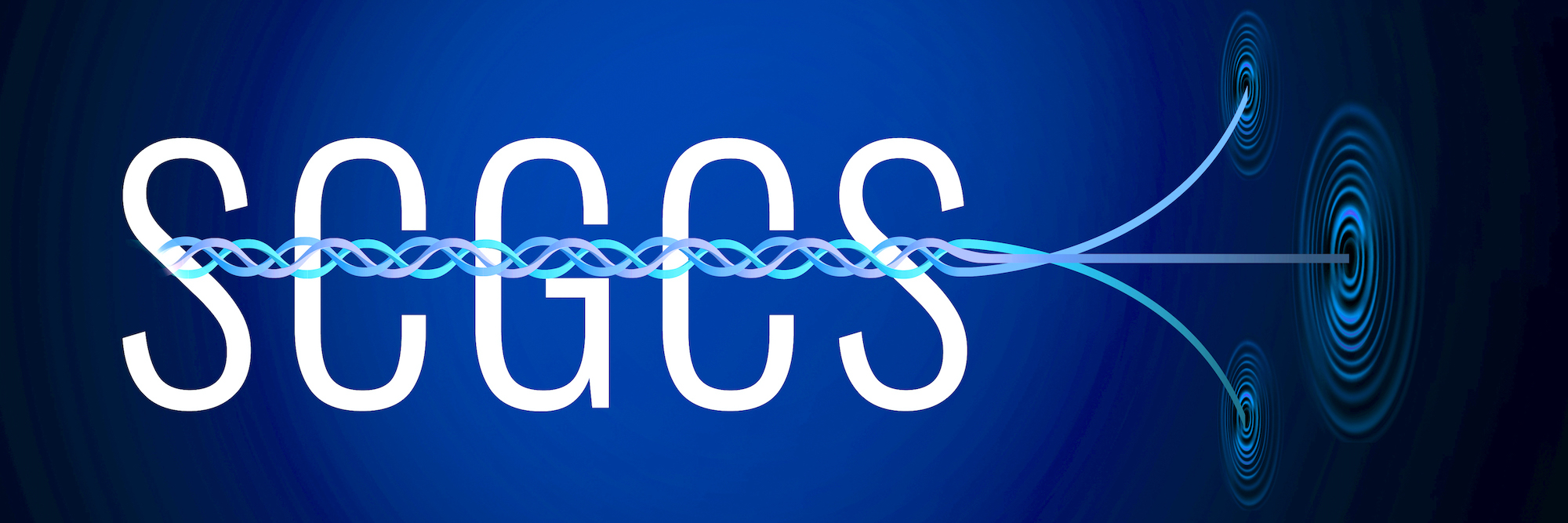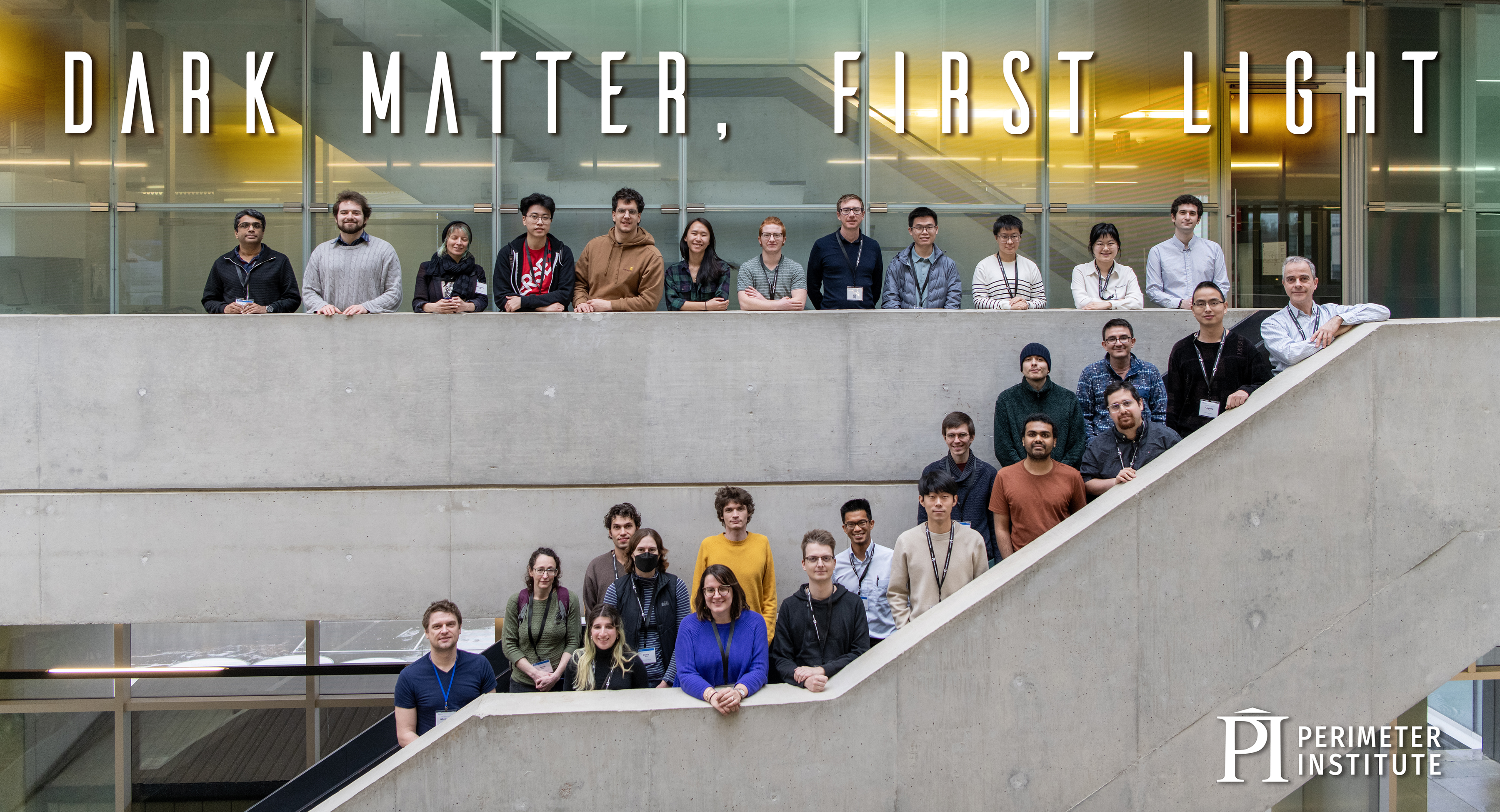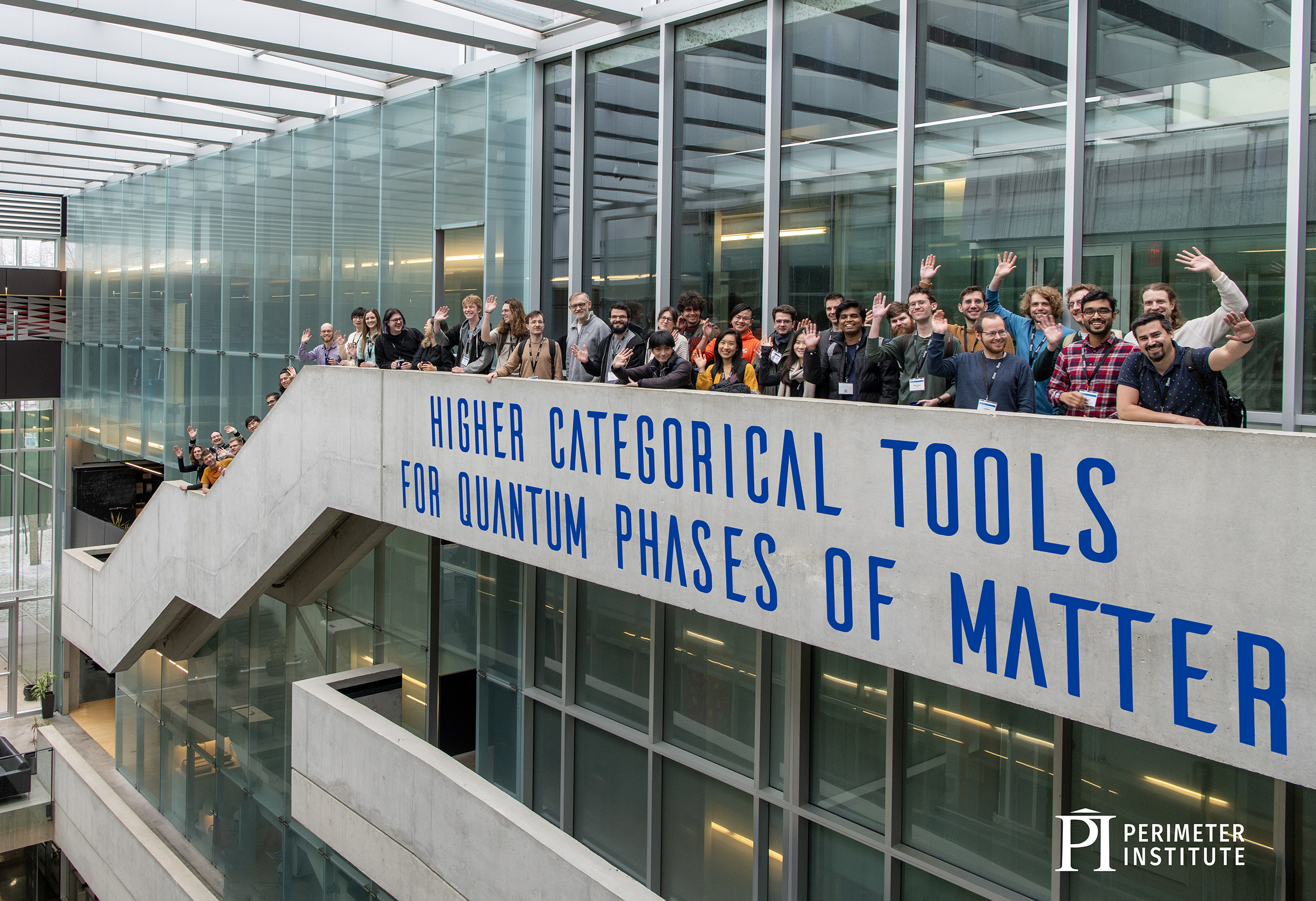Format results
-
Talk
-
Quantum Matter Lecture
Yin-Chen He Perimeter Institute for Theoretical Physics
-
Quantum Matter Lecture
Mohamed Hibat Allah Perimeter Institute for Theoretical Physics
-
Quantum Matter Lecture
Timothy Hsieh Perimeter Institute for Theoretical Physics
-
Quantum Matter Lecture
Timothy Hsieh Perimeter Institute for Theoretical Physics
-
Quantum Matter Lecture
Timothy Hsieh Perimeter Institute for Theoretical Physics
-
Quantum Matter Lecture
Yin-Chen He Perimeter Institute for Theoretical Physics
-
Quantum Matter Lecture
Yin-Chen He Perimeter Institute for Theoretical Physics
-
Quantum Matter Lecture
Yin-Chen He Perimeter Institute for Theoretical Physics
-
-
Talk
-
-
Analogies between QFT and lattice systems
Anton Kapustin California Institute of Technology (Caltech) - Division of Physics Mathematics & Astronomy
-
Models of anyons with symmetry: a bulk-boundary correspondence
Fiona Burnell University of Minnesota
-
Twisted Tools for (Untwisted) Quantum Field Theory
Justin Kulp Stony Brook University
-
Quantum double models and Dijkgraaf-Witten theory with defects
Catherine Meusburger -
Topological sectors in quantum lattice models
Clement Delcamp Institut des Hautes Etudes Scientifiques (IHES)
-
Douglas-Reutter 4d TQFT as a generalised orbifold
Vincentas Mulevičius Vilnius University
-
Weak Hopf symmetric tensor networks
Andras Molnar University of Vienna
-
-
Talk
-
Opening Remarks
-
Katie Mack Perimeter Institute
-
Aaron Vincent Queen's University
-
-
Dark and visible structures with dissipative dark matter
Sarah Shandera Pennsylvania State University
-
-
-
The First Stars in the Universe as Dark Matter Laboratories
Cosmin Ilie Colgate University
-
Probing Atomic Dark Matter using Simulated Galactic Subhalo Populations
Caleb Gemmell University of Toronto
-
Dark matter at high redshifts with JWST
Julian Munoz The University of Texas at Austin
-
(Dark) Baryogenesis through Asymmetric Reheating in the Mirror Twin Higgs.
Andrija Rasovic University of Toronto
-
-
Talk
-
-
Talk
-
Standard Model Lecture
Michael Trott Perimeter Institute for Theoretical Physics
-
Standard Model Lecture
Michael Trott Perimeter Institute for Theoretical Physics
-
Standard Model Lecture
Michael Trott Perimeter Institute for Theoretical Physics
-
Standard Model Lecture
Michael Trott Perimeter Institute for Theoretical Physics
-
Standard Model Lecture
Michael Trott Perimeter Institute for Theoretical Physics
-
Standard Model Lecture
Michael Trott Perimeter Institute for Theoretical Physics
-
Standard Model Lecture
Michael Trott Perimeter Institute for Theoretical Physics
-
Standard Model Lecture
Michael Trott Perimeter Institute for Theoretical Physics
-
-
Talk
-
-
Talk
-
Mathematical Physics Core Lecture
Giuseppe Sellaroli Perimeter Institute for Theoretical Physics
-
Mathematical Physics Core Lecture
Giuseppe Sellaroli Perimeter Institute for Theoretical Physics
-
Mathematical Physics Core Lecture
Giuseppe Sellaroli Perimeter Institute for Theoretical Physics
-
Mathematical Physics Core Lecture
Giuseppe Sellaroli Perimeter Institute for Theoretical Physics
-
Mathematical Physics Core Lecture
Giuseppe Sellaroli Perimeter Institute for Theoretical Physics
-
Mathematical Physics Core Lecture
Giuseppe Sellaroli Perimeter Institute for Theoretical Physics
-
Mathematical Physics Core Lecture
Giuseppe Sellaroli Perimeter Institute for Theoretical Physics
-
Mathematical Physics Core Lecture
Giuseppe Sellaroli Perimeter Institute for Theoretical Physics
-
-
Talk
-
Quantum Foundations Lecture
Lucien Hardy Perimeter Institute for Theoretical Physics
-
Quantum Foundations Lecture
Lucien Hardy Perimeter Institute for Theoretical Physics
-
Quantum Foundations Lecture
Lucien Hardy Perimeter Institute for Theoretical Physics
-
Quantum Foundations Lecture
Lucien Hardy Perimeter Institute for Theoretical Physics
-
Quantum Foundations Lecture
Lucien Hardy Perimeter Institute for Theoretical Physics
-
Quantum Foundations Lecture
Lucien Hardy Perimeter Institute for Theoretical Physics
-
Quantum Foundations Lecture
Lucien Hardy Perimeter Institute for Theoretical Physics
-
Quantum Foundations Lecture
Lucien Hardy Perimeter Institute for Theoretical Physics
-
-
Talk
-
-
Talk
-
Statistical Physics Lecture - 121223
Emilie Huffman Perimeter Institute for Theoretical Physics
PIRSA:23120015 -
Statistical Physics Lecture - 121123
Emilie Huffman Perimeter Institute for Theoretical Physics
PIRSA:23120014 -
Statistical Physics Lecture - 120623
Emilie Huffman Perimeter Institute for Theoretical Physics
PIRSA:23120012 -
Statistical Physics Lecture - 120523
Emilie Huffman Perimeter Institute for Theoretical Physics
PIRSA:23120013 -
Statistical Physics Lecture - 120423
Emilie Huffman Perimeter Institute for Theoretical Physics
PIRSA:23120011 -
Statistical Physics Lecture - 120123
Emilie Huffman Perimeter Institute for Theoretical Physics
PIRSA:23120010 -
Statistical Physics Lecture - 112923
Emilie Huffman Perimeter Institute for Theoretical Physics
PIRSA:23110033 -
Statistical Physics Lecture - 112723
Emilie Huffman Perimeter Institute for Theoretical Physics
PIRSA:23110032
-
-
Talk
-
Topological Quantum Field Theories Lecture 20231208
Lukas Mueller Perimeter Institute for Theoretical Physics
-
Topological Quantum Field Theories Lecture 20231201
Lukas Mueller Perimeter Institute for Theoretical Physics
-
Topological Quantum Field Theories Lecture 20231124
Lukas Mueller Perimeter Institute for Theoretical Physics
-
Topological Quantum Field Theories Lecture 20231110
Lukas Mueller Perimeter Institute for Theoretical Physics
-
Topological Quantum Field Theories Lecture 20231103
Lukas Mueller Perimeter Institute for Theoretical Physics
-
Topological Quantum Field Theories Lecture 20231027
Lukas Mueller Perimeter Institute for Theoretical Physics
-
Topological Quantum Field Theories Lecture 20231020
Lukas Mueller Perimeter Institute for Theoretical Physics
-
Topological Quantum Field Theories Lecture 20231013
Lukas Mueller Perimeter Institute for Theoretical Physics
-
-
Talk
-
-
Quantum Matter 2023/24
This course will cover quantum phases of matter, with a focus on long-range entangled states, topological states, and quantum criticality.
-
Higher Categorical Tools for Quantum Phases of Matter
Quantum phases have become a staple of modern physics, thanks to their appearance in fields as diverse as condensed matter physics, quantum field theory, quantum information processing, and topology. The description of quantum phases of matter requires novel mathematical tools that lie beyond the old symmetry breaking perspective on phases. Techniques from topological field theory, homotopy theory, and (higher) category theory show great potential for advancing our understanding of the characterization and classification of quantum phases. The goal of this workshop is to bring together experts from across mathematics and physics to discuss recent breakthroughs in these mathematical tools and their application to physical problems.
Scientific Organizers
Lukas Mueller
Alex Turzillo
Davide Gaiotto
Sponsored in part by the Simons Collaboration on Global Categorical Symmetries

-
Dark Matter, First Light
New observational programs and techniques are opening a window to the first galaxies in the universe and bringing surprises along the way. In this workshop, we'll explore how dark matter phenomenology may have impacted the first stars and galaxies, focusing on how improved modeling and simulations can allow us to use new and upcoming high-redshift data to gain insight into dark matter's fundamental nature.
Sponsored in part by:


-
-
Standard Model 2023/24
The Standard Model of particle physics is introduced, and reviewed, from a modern effective field theory perspective.
-
Gravitational Physics
The Gravitational Physics course takes your knowledge and practice of gravity to the next level. We start by recapping the essential elements of differential geometry, adding some new techniques to the toolbox, then apply some of these methods to learning about submanifolds, extra dimensions, and black hole thermodynamics. Towards the end of the course, we delve into the frontiers, with a sample of recent research topics.
-
Mathematical Physics - Core 2023/24
This course will introduce you to some of the geometrical structures underlying theoretical physics. Previous knowledge of differential geometry is not required. Topics covered in the course include: Introduction to manifolds, differential forms, symplectic manifolds, symplectic version of Noether’s theorem, integration on manifolds, fiber bundles, principal bundles and applications to gauge theory.
-
-
Quantum Field Theory 2 2023/24
Quantum Field Theory 2 2023/24 -
-
Topological Quantum Field Theories - mini-course
A quantum field theory is deemed topological if it exhibits the remarkable property of being independent of any background metric. In contrast to most other types of quantum field theories, topological quantum field theories possess a well-defined mathematical framework, tracing its roots back to the pioneering work of Atiyah in 1988. The mathematical tools employed to define and study topological quantum field theories encompass concepts from category theory, homotopy theory, topology, and algebra.
In this course, we will delve into the mathematical foundations of this field, explore examples and classification results, especially in lower dimensions. Subsequently, we will explore more advanced aspects, such as invertible theories, defects, the cobordism hypothesis, or state sum models in dimensions 3 and 4 (including Turaev-Viro and Douglas-Reutter models), depending on the interests of the audience.
Today, the mathematics of topological quantum field theories has found numerous applications in physics. Recent applications include the study of anomalies, non-invertible symmetries, the classification of topological phases of matter, and lattice models. The course aims to provide the necessary background for understanding these applications. -
General Relativity for Cosmology
This is an advanced graduate course which develops the math and physics of general relativity from scratch up to the highest level. The going will sometimes be steep but I try to be always careful. The purpose is to prepare for studies in quantum gravity, relativistic quantum information, black hole physics and cosmology. Quick summary of the contents: - Coordinate-free Differential Geometry, Weyl versus Ricci curvature versus Torsion, Vielbein Formalism, Spin-connections, Form-valued Tensors, Spectral Geometry, some Cohomology. - Derivations of General Relativity including as a Gauge Theory, Diffeomorphism Invariance vs. Symmetries, Bianchi Identities vs. Local and Global Conservation Laws. - Penrose Diagrams for Black Holes and Cosmology, Types of Horizons, Energy Conditions and Singularity theorems, Properties and Classification of Exact Solutions. - Cosmology and Models of Cosmic Inflation

